- Botanical description
- Healing properties of the plant
- Methods of application cornflower
Weed cornflower blue cornflower is a member of the family Complex and has medicinal properties. It almost always can be found on fields sown with rye, wheat, flax, potatoes and other crops, on roadsides, along forest belts. In addition to spontaneous distribution, cornflowers are also grown specifically for decorative purposes and the manufacture of medicines.
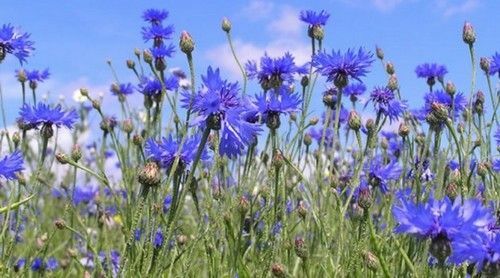
The main plant raw materials used in folk medicine are the flowers of cornflower blue. They are not very large, painted blue or blue, appear in late spring and remain until the end of autumn. With certain diseases, medicinal purposes also apply to the seeds of the plant, which mature by the end of the summer.
Botanical description
The flowers of the cornflower blue according to the description of the botanical characteristics of the plant are collected in single baskets, the diameter of which does not exceed 3 cm. They have a common wrap, formed by brown leafy leaves with a tiny disposition. Small flowers in the basket are divided into two types: marginal and internal. Flowers located along the margins of the pedicel are blue, funnel-shaped and asexual. The internal flowers are colored bright and saturated blue-violet, have a tubular shape and are bisexual.
Fruits of cornflower blue are a seed of ashy or gray-yellow coloring of an obovate form. It has a smooth shiny surface. At one end is a red tuft of stiff bristly hairs, whose length is slightly less than the length of the fetus itself( 2.5-4 mm).
Stalk erect erect and can reach 1 m, but usually its height is not more than 80 cm. The arrangement of the leaves on the stem is consistent. They have a narrow and elongated shape, in the upper part of the stem - integral, and below - lobed. The stem and leaves are covered with thin cobweb hairs. The plant has a very developed root system, represented by a thin stem root.
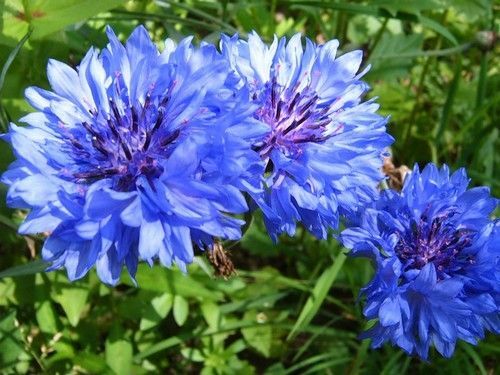
Healing properties of a plant
Traditional recipes based on cornflower blue are effective in the treatment of many diseases, which is caused by a wide spectrum of pharmacological activity of compounds found in its composition. Among them:
- glycosides( anthocyanins);
- tanning agents;
- flavonoids;
- vitamins( ascorbic acid, beta-carotene);
- essential oils;
- minerals( potassium, magnesium, copper, iron, calcium);
- alkaloids;
- organic acids, etc.
Important: The quantitative composition in the plant of certain compounds that exert biological action may differ depending on the site of its growth.
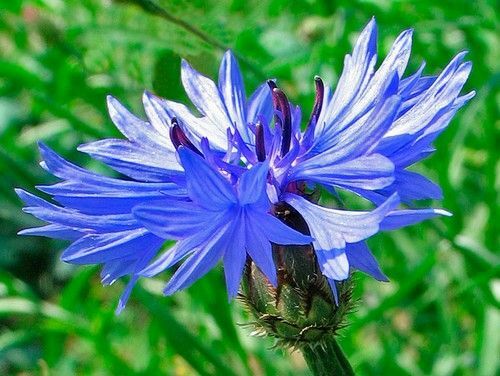
in their composition. Folk remedies from cornflower blue have medicinal properties and have the following effect on the body:
- antipyretic and anti-inflammatory;
- is an analgesic;
- is relaxing and spasmolytic;
- diaphoretic and diuretic;
- wound healing and regenerating;
- antioxidant;
- choleretic;
- is an antimicrobial agent.
Cornflower blue as a medicinal plant is taken as part of the complex treatment of colds, diseases of the urinary system( cystitis, nephritis, urethritis, urolithiasis), for the removal of edema that are a consequence of disorders in the work of the cardiovascular system or kidneys. Its reception helps to cleanse the body of harmful and toxic substances, removing excess fluid and burning fat.
Choleretic effect of cornflower flowers improves digestion and digestion. They are used for diseases of the biliary tract, liver, jaundice, helminthic invasions, as well as to improve appetite in the composition of herbal collections, or by themselves.
Means from flowers and seeds of plants are applied externally with diseases of the skin, joints and eyes( blepharitis, conjunctivitis, fatigue, impairment of twilight vision).
Useful properties of cornflower blue are used for cosmetic purposes. Means based on it improve the condition and appearance of the skin in the eyes, on the face and neck, strengthen the hair and prevent their loss.
Methods of using cornflower
In folk medicine, for therapeutic purposes, apply edge flowers or rarely cornflower seeds. Collection and preparation of raw materials is carried out in the summer. At first, the flower baskets are completely cut off, and then only the marginal flowers are gently pulled out of them with their hands. The raw material obtained in this way is laid out on paper with a layer of up to 2 cm in height and dried in a dark ventilated place. The dried flowers are folded into glass jars or tissue bags and used as needed. Shelf life is a maximum of two years in a dry, dark place.
Important: If the cornflower falls on the flowers during the drying process of sunlight, they gradually lose their color and a significant part of their healing properties. Such raw materials become unsuitable for use in medicinal purposes.
Flowers of cornflower blue have been used in folk medicine as a separate therapeutic agent in the form of decoctions, infusions and tinctures, as well as in the composition of herbal remedies prescribed for the treatment of diseases of the urinary system, digestive tract, hypertension.
Infusion of flowers
Infusion of cornflower has antibacterial, choleretic and diuretic effects. It is prepared according to the following technology:
- Flowers in the amount of 1 tbsp.l.placed in a small pan( enameled) and pour a glass of boiling water.
- The pan is covered with a lid and placed on a boiling water bath for 15 minutes.
- The resulting infusion is gradually cooled to room temperature.
- The flowers are filtered, squeezed.
- To the solution, boiled water is added in such an amount that the total volume is 200 ml.
Take the medication received for 20 ml in the morning, at lunch and in the evening. It can be stored in the refrigerator for no more than two days.
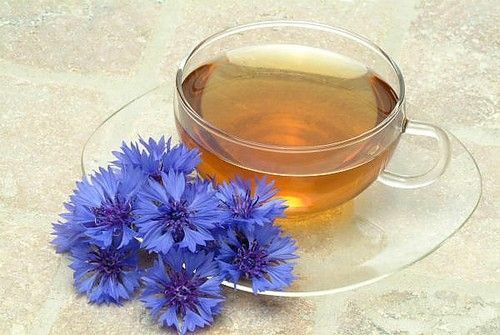
Decoction of flowers
Decoction of flowers from a cornflower is used for diseases of the eyes of an inflammatory nature and for colds accompanied by a cough. Included in the composition of flowers saponins have an expectorant effect, so they facilitate the departure of phlegm.
To get a decoction of 1 tsp.carefully crushed flowers pour 0.25 liters of boiling water and boil for 4-5 minutes. Then the drug is infused for 1 hour, filtered and taken with laryngitis, angina or bronchitis, 40 ml several times a day.
Alcohol tincture of flowers
Alcohol-containing tincture of plant flowers is often used to treat inflammation of various parts of the genitourinary system and increase appetite. Prepare and take it in the following way:
- Mix in a proportion of 1 to 10 dried raw materials with alcohol or vodka.
- Tightly close the container with the resulting mixture and press for 14 days, shaking daily.
- Drink 20-30 drops at a time, washing with water.
External application of
As an external agent, cornflower blue flowers have been used in the stimulation of skin, rash, diathesis, allergic dermatosis, boils. From the decoction of the plant make compresses, lotions or simply rub the affected areas on the skin.
In the form of lotions, cornflower is used for eye diseases. To receive the funds 1 tbsp.l.flowers pour 0.4 liters of boiling water, insist 1 hour, cool and filter. With conjunctivitis, these lotions are applied up to 8 times a day.
Recommendation: To relieve fatigue and increase the tone of the body can take a bath with flowers cornflower. Pre-half a glass of flowers along with baskets pour 0.5 liters of boiling water and leave the mixture to infuse for half an hour. The mixture is then filtered and added to a bath with a water temperature of about 37 ° C.
In baldness, it is recommended to rub the roots of hair, as well as the scalp, with a warm freshly prepared infusion of flowers. A good effect with this problem is the preparation prepared from 1 st.l.plant flowers, 250 ml of boiling water and 250 ml of table wine 9% of vinegar. The mixture is insisted for half an hour, filtered and rubbed into the roots of the hair.
If you add 20 ml of alcohol or vodka to your infusion, you will get a lotion that can be used to treat oily skin of the face. For the preparation of infusion in this case, use both dry and freshly picked flowers.
Application of the seeds of cornflower seeds
Seeds of cornflower blue are effective in combating warts. They are dried and applied to neoplasms. Also they, together with the crushed leaves of the plant, can be used as compresses to accelerate the healing of wounds.
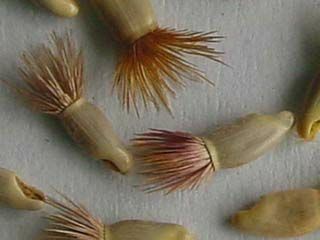
Important: Folk remedies with cornflower can be used for treatment only after consulting a doctor, as they have some contraindications, including pregnancy, uterine bleeding, individual intolerance, etc.
